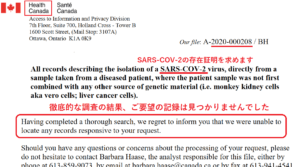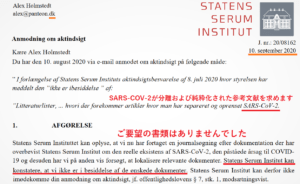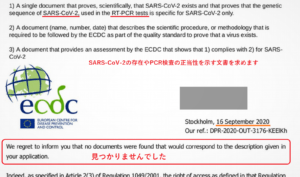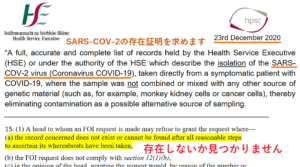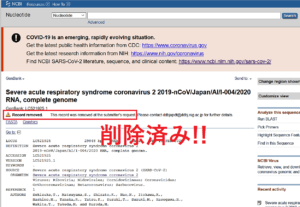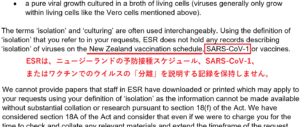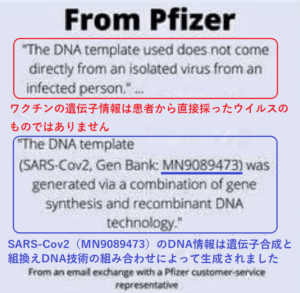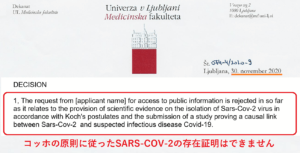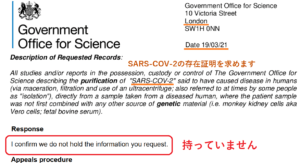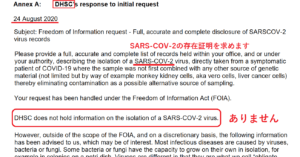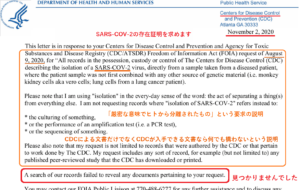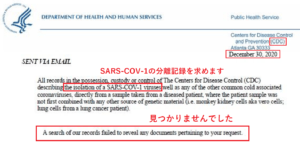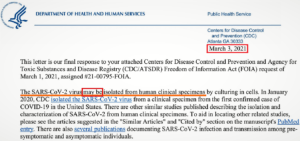End of the Road for the Germ Theory
Fergus Frank, 9 May 2021
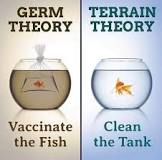
said to be in the middle of a global coronavirus pandemic, but is it really? The
idea that a “virus” causes a “disease” is based on the “germ theory” of
disease, a deceptive oversimplification that was promoted in the 1870s by Louis
Pasteur in France.
The main idea
of the germ theory is that a certain “pathogen” (bacteria, virus, etc.) causes
a discrete disease with recognizable symptoms. That is, a “flu virus” causes
“flu”, along with its usual symptoms that we can see and therefore say, “Oh,
you have the flu.” That’s what we have been taught at home, in school and at
the local hospital or clinic, so we believe it.
Around the same
time Pasteur was hatching his dubious theories, another French researcher,
Antoine Béchamp,
was reaching very different conclusions. Using a microscope with a
magnification of around 1,000 times, Béchamp discovered minute granules in cells. He called
them “microzymas” (or little ferments) and found them everywhere he looked in
organic material. Through observation and experimentation, Béchamp
came to believe that microzymas were the primary anatomical elements of all
living beings. He found that when an organ dies, the cells disappear but the
microzymas continue to exist and are imperishable.1 They are
immortal and indestructible. Béchamp also claimed that microzymas frequently altered
their shape to transform into what were known as bacteria, and that the
bacteria could also revert back to microzymas. This became known as the principle
of “pleomorphism”, which was in stark contrast with the theory of
“monomorphism” supported by Pasteur, which asserts that microorganisms always
take the same form and never change. Unfortunately, it was the monomorphic view
that came to be the accepted scientific paradigm.
Monomorphism
gave rise to the idea that, if some weakened form of a disease were introduced
into a healthy person, that person would somehow develop an immunity to that
disease without becoming ill. Louis Pasteur did not originate this idea, but by
a simplistic synthesis of the research of Antoine Béchamp
and others, he was able to produce and apply “vaccines” that appeared to work,
i.e. prevent people or animals from contracting diseases. They didn’t work, but
they brought Pasteur fame and wealth, and this was what caught the interest of
pharmaceutical companies, which have been reaping the profits while harming and
killing people ever since.
The fraud of
the germ theory and Pasteur’s use of vaccines are explained in Béchamp or
Pasteur?: A Lost Chapter in the History of Biology by Ethel D. Hume and R. B.
Pearson. The book documents how Florence Nightingale published an attack on the
germ theory in 1860, 17 years before Pasteur proposed the idea, which means
that he could not have invented it. Nightingale denounced the germ theory,
saying, “The specific disease doctrine is the grand refuge of weak, uncultured,
unstable minds, such as now rule in the medical profession. There are no
specific diseases; there are specific disease conditions.” (Italics in
original)
According to
the theory of monomorphism, “pathogens” are discrete, unchanging entities. The
bacteria or virus that is said to cause a certain disease is always the same one
and always looks the same under a microscope. This has to be true for modern
pharmaceutical agents to work. A certain drug is said to act in a certain way
to somehow prevent a certain “pathogen” from causing a certain disease in a
person (or animal or plant). The action of the drug often depends on the shape
of the “pathogen”. That is, the drug is said to “fit” onto a certain part of
the “pathogen” to block its action. Or a weakened form of the “pathogen” is
introduced into the body to stimulate antibodies, which “remember” the
“pathogen” so that if that “pathogen” appears again, the antibodies will know
how to deal with it. If, in fact, the bacteria or viruses changed shape, i.e.
they were pleomorphic, how would this be possible? For microorganisms do change
shape; they are pleomorphic, but modern medicine almost completely denies the
idea of pleomorphism.
Not only do
microzymas transform into bacteria and vice versa, but bacteria themselves
change shape, that is, they appear to become “different bacteria” and have
complex life cycles that may also include viruses. The trigger for this
morphological change is said to be environmental change inside the body, known
as the “terrain”. When there is a change inside the body (a “disease”), cells
begin to degrade and die, and it is then the job of bacteria to clean up this
decaying material, and they change shape to fit the function they need to
perform. Thus bacteria (and other microorganisms) are always associated with
diseased and dying tissue, but far from being the cause of it, they are helping
to rectify the problem! Does it make sense, then, to be attempting to kill
bacteria and other microorganisms using petrochemical-derived drugs and/or
antibiotics, as is done in the current medical paradigm? The short answer is no
– it is simply destroying our friends who are trying to clear up the problem!
How can we be
so sure that these microzymas exist and that bacteria and other microorganisms
are pleomorphic? Firstly, because many researchers observed microzymas besides Béchamp:
Virginia Livingston called them “progenitor cryptocides,” Wilhelm Reich called
them “bions”, zoologist Gunther Enderlain called them “protits”, dermatologist
Alan Cantwell called them “scintillating corpuscles”, biologist Gaston Naessens
called them “somatids” and pharmacist Wilhelm Von Brehner called them “siphonospora
polymorpha”.2 Secondly, because they can actually be observed living, moving
and transforming from one shape to another, whereas conventional medicine looks
at samples of only dead and stained
microorganisms.
In the late
1920s, Royal Raymond Rife invented a microscope called the Rife Universal
Microscope,3 with which he was not only able to see microzymas, but
was also able to observe the life cycles of microorganisms:3
A major upshot of Rife’s work
was his ability, through several pleomorphic stages, to transform a virus he
found in cancer tissue into a fungus, plant the fungus in an asparagus-based
medium, and produce a bacillus E. coli, the type of microform indigenous to the
human intestine. This was repeated hundreds of times. By this accomplishment,
Rife showed that the pleomorphic capacity of microforms goes beyond the
bacterial level to the fungal level. Dr. Young* has observed this cycle, and is
suggesting that its progression to the last stage – mold – is critical. And he
includes in this cycle the very important stages intermediate to microzymas and
bacteria, the protein complexes usually referred to as viruses, and their
immediate descendants, the cell-wall deficient forms detailed by Lida Mattman,
Ph.D. * R. O. Young, S.
R. Young (2010) The pH Miracle.
Hachette Publishing, New York, USA.
Inventing a superb microscope was not Rife’s only achievement. He also
invented a radio frequency beam ray machine that could cure cancers and other
diseases. The drug industry was not happy about this because it threatened to
bring about huge losses in profits made from synthetic drugs. This is what happened to Rife and his astonishing
electronic therapy:
First, arsonists burned the Burnett Lab in New Jersey,
which was validating Rife’s work. Then, someone fatally poisoned Dr. Millbank
Johnson, President of the Southern California American Medical Association. He
died hours before a press conference where he was to announce to the world that
Rife’s electronic therapy had cured every patient (16 out of 16) in that
medical study supervised by the University of Southern California. (First
thought to be accidental death, the poison was discovered years later by
federal investigators when Dr. Johnson’s body was exhumed). Dr. Nemens,
who had duplicated some of Rife’s work just 40 miles from Rife’s lab, was
killed in a mysterious fire which destroyed his lab. Rife himself was finally
killed at Grossmont Hospital by an accidental lethal dose of Valium.4
This evidence
explodes the assertion that we are in the middle of a global coronavirus
pandemic. According to Dr. Tom Cowan and Sally Fallon Morell, viruses and
exosomes are one and the same thing.5 Exosomes perform a
detoxification function in a similar way to bacteria, in that they package up
and carry out of the cell any toxins that may have somehow appeared in the
cell. They also act as messengers, warning other cells that there is a problem.
The terrain theory tells us that it is not that the “virus” is invading the body
and the cell from outside, causing an
infection, but that there is an environmental problem having an effect on the inside of the body and the cell, and the
exosome is working to clear it up and warn other cells about what is happening.
Even modern
medical science admits that, if you want to prove that a certain “pathogen” is
causing a certain “disease”, you have to isolate the virus (get a pure sample
of it and nothing else) and then infect a human or an animal with it and get
the same “disease”. If you cannot do this, as required by the generally
accepted Koch’s postulates dating from 1884, you cannot prove causation. So where
are these isolated samples of the Covid-19 coronavirus? They don’t exist, and
cannot exist. Why is that?
Firstly, as
evidence that pure, isolated samples of the Covid-19 coronavirus do not exist,
a Japanese source has provided us with responses to Freedom of Information
requests showing that 10 countries, plus Pfizer itself, do not hold an isolate
of SARS-COV-2 (see appendix).
Thus, the
virus does not exist in reality; it exists only in a computer program. For an example, let’s look at the paper entitled “Severe Acute
Respiratory Syndrome Coronavirus 2 from Patient with
Coronavirus Disease, United States” by Harcourt et al. on the Centers for Disease
Control and Prevention (CDC) website.6 Under the heading “Whole
Genome Sequencing,” the authors say “We designed 37 pairs of nested PCRs spanning
the genome on the basis of the coronavirus reference sequence (GenBank
accession no. NC045512).”
Critiquing this
CDC paper, Dr. Tom Cowan says: 7
To me, this computer-generation
step constitutes scientific fraud. Here is an equivalency: A
group of researchers claim to have found a unicorn because they found a piece
of a hoof, a hair from a tail, and a snippet of a horn. They then add that
information into a computer and program it to re-create the unicorn, and they
then claim this computer re-creation is the real unicorn. (emphasis added)
You might
want to envision this as shown in the figure below.

Figure. An imaginary Covid, cobbled together from
disparate bits and pieces, some real, some invented
The authors
also say they made the final decision about which of the computer-generated
virus genome versions was the “real” one by consensus. The existence of the so-called
virus variants is “established” in the same way.
Later in the
paper, it is stated that:
Because research has
been initiated to study and respond to SARS-CoV-2, information about cell lines
and types susceptible to infection is needed. Therefore, we examined the
capacity of SARS-CoV-2 to infect and replicate in several common primate and
human cell lines, including human adenocarcinoma cells (A549), human liver
cells (HUH7.0), and human embryonic kidney cells (HEK-293T), in addition to
Vero E6 and Vero CCL81 cells [Vero cells are kidney epithelial cells
extracted from an African green monkey]. We also examined an available big brown bat kidney cell line (EFK3B)
for SARS-CoV-2 replication capacity. Each cell line was inoculated at high
multiplicity of infection and examined 24 h postinfection (Figure
3, panel A). No [cytopathic effects
or effects harmful to the cell were] observed in any of the cell lines except
in Vero cells, which grew to >107 PFU
at 24 h postinfection. (emphasis added)
In short, the
researchers inoculated six types of cell lines: three human cell lines, two
Vero cell lines and a big brown bat kidney cell line. Please look at the emphasized
part. Dr. Cowan explains: [Whatever it
was that the researchers were calling “SARS-CoV-2”] “is ONLY infective to
monkey kidney cells, and only then when you add two potent drugs (gentamicin
and amphotericin), known to be toxic to kidneys, to the mix.” The drugs might explain why the Vero cells were
“infected”. As the three human cell lines were not affected, the so-called “SARS-CoV-2”, or whatever it was, is not infective
to any of the three human tissue cultures the CDC tested. The “SARS-CoV-2”
virus is therefore harmless to human beings, though Harcourt et al. – strangely
– forget to mention that in their conclusion.
It looks very
much as if there is, in fact, no “SARS-CoV-2 coronavirus”. That doesn’t necessarily mean that “viruses” don’t
exist. If you believe the conventional “germ theory” paradigm to be correct,
then please explain why it is so difficult to isolate a pure sample of pathogenic
viruses and to prove their infectiveness by re-infecting an animal or another
person.
If, however,
you take the terrain/pleomorphism paradigm to be largely correct, the above is
explained by the fact that microzymas transform into viruses and/or bacteria
when, where and in the form needed to solve some problem inside the body – in
the terrain. Pleomorphism explains why it is so hard to isolate and purify a
virus sample. Attempting to isolate them into a different environment would
cause them to transform into something else. Imagine that you have some marbles
on the floor and
you are picking them up and placing them in a dish, but as soon as you do so
they turn into mosquitoes and fly away. Seen this way, viruses are very hard to
pin down, that is, it’s very hard to get a pure sample of them.
There is simply
no such thing as an infective or contagious “pathogenic virus”. Whatever it is,
a virus is much more likely to be doing you a favour than giving you a disease.
Viruses/exosomes are also present inside your body, but are highly unlikely to
be transmissible from one person to another through the air. What this means is
that everything we have been told to do since around March 2020 – stay home,
wear a mask, wash our hands, self-isolate, social distance, etc. – has been a
complete fraud.
There is
still a lot to be learned about the terrain/pleomorphism paradigm. Not enough
is known about the bacteria and other microorganisms, including
viruses/exosomes, that are said to be part of the life cycle of the microzymas.
This is because the study of microzymas and pleomorphism, begun in the latter
half of the 19th century, has been taboo since Pasteur announced his
germ theory, which became the basis for trillions of dollars of profits once
the pharmaceutical industry realized how this overly simplistic theory could be
used for the fraudulent sale of synthetic drugs and vaccines. This monstrous
deception, in place for nearly 150 years, is now being used in an attempt to
kill or enslave the entire human race.
Pasteur is
said to have made a deathbed confession in which he admitted that “the microbe
is nothing, the terrain is everything”.8 The deception must now be exposed,
the coronavirus/vaccine agenda must be stopped, the perpetrators must be brought
to justice, and medical science must be put back on the tracks from which it
was derailed at the end of the 19th century.
Thankfully,
it’s the end of the road for the germ theory.
Appendix: Freedom
of Information requests showing that 10 countries, plus Pfizer itself, do not
hold an isolate of SARS-COV-2
The following
responses to Freedom of Information requests made to authorities in 10
countries, as well as to Pfizer, were compiled by the Japanese authorities and
contain annotations in Japanese characters in red font. Each consists of a
brief translation of the original English content and therefore a translation
is provided only where the language of the response is not English.
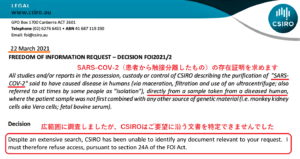
Research
